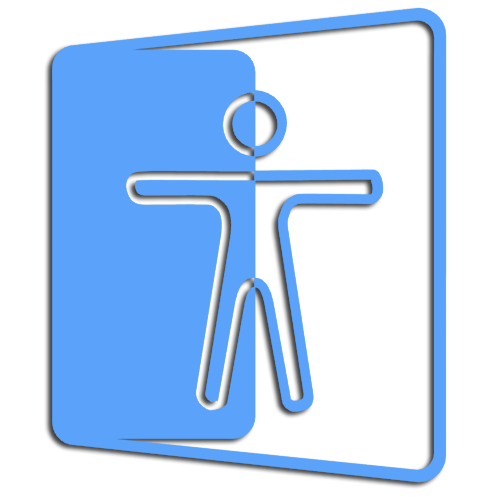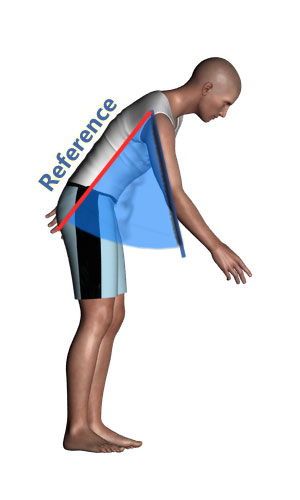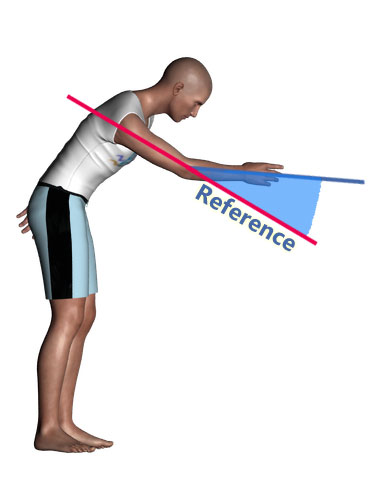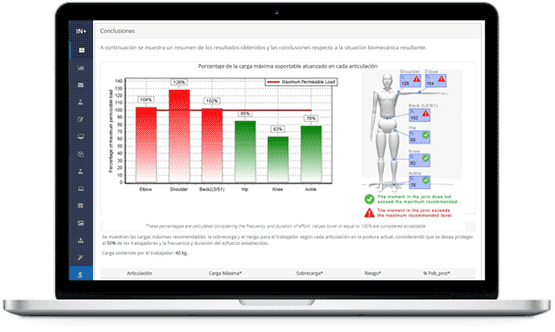

Excessive postural strain is a common risk factor associated with the development of musculoskeletal disorders. Frequently or repeatedly adopting improper postures at work can lead to fatigue and, over time, may cause health problems. Therefore, assessing and reducing postural or static load, if necessary, is a vital step in improving workstation ergonomics.
There are several methods available for evaluating the risk associated with postural load, differing in aspects such as application scope, assessment of individual or combined postures, application conditions, or body parts considered for evaluation. The RULA method is a widely used observational technique for assessing postures in practice.
RULA was developed in 1993 by McAtamney and Corlett from the University of Nottingham's Institute for Occupational Ergonomics. The RULA method aims to assess workers' exposure to risk factors that contribute to high postural load and potential upper body disorders. The method considers the adopted posture, its duration and frequency, and the forces exerted while maintaining it.
RULA assigns a score to a specific posture, which then corresponds to a Level of Action. This level indicates whether the posture is acceptable or the extent to which adjustments or redesigns are required. In essence, RULA enables evaluators to identify potential ergonomic issues arising from excessive postural load.
Remember...
The objective of RULA is to assess the degree of exposure of the worker to risk due to the adoption of inadequate postures.
Although the method considers other factors such as forces exerted or repetitiveness, it should be used only to assess postural loading.
Remember...
RULA assesses individual postures rather than sets or sequences of postures. It selects those to be evaluated based on their duration, frequency, or because they deviate significantly from the neutral position..
The RULA method evaluates individual postures rather than sets or sequences of postures. As a result, it is necessary to select the postures to be assessed from those adopted by the worker at their workstation. The postures must be selected based on their duration, frequency, or significant deviation from the neutral position.
For this purpose, the first step involves observing the tasks performed by the worker during several work cycles to select the postures to be evaluated. If the cycle is very long or there are no cycles, evaluations can be conducted at regular intervals. In this case, the time spent by the worker in each posture should also be taken into account.
The measurements to be taken on the postures adopted by the worker are primarily angular (the angles formed by different body parts in relation to specific references). These measurements can be taken directly from the worker using angle protractors, electrogoniometers, or any device that allows for the collection of angular data. On the other hand, photographs of the worker in the posture being studied can also be used to measure the angles on the images. If photographs are used, it is necessary to capture a sufficient number of shots from different perspectives (elevation, profile, detailed views, etc.). In this case, it is crucial to ensure that the angles to be measured appear in true magnitude in the images, meaning the plane in which the angle to be measured appears is parallel to the camera plane (Figure 1). For this task, you can use RULER, Ergonizas' tool for measuring angles on photographs.
The method should be applied separately to the right and left sides of the body. The expert evaluator may choose in advance the side that seems to be subjected to greater postural strain; however, when in doubt, it is advisable to analyze both sides.
Remember...
RULA is an acronym for Rapid Upper Limb Assessment. Although the method requires data from other parts of the body (trunk, legs...), the assessment focuses on the risk in the upper limbs.
Remember...
If you use photographs to measure angles, make sure they are displayed in true magnitude in the images (see Figure 1).
RULER...
You can use RULER, the Ergonizas' tool, to measure angles in photographs or videos of the worker performing their task.
Remember...
The right and left sides of the body are assessed separately. If in doubt, analyze both sides.
Remember...
... RULA divides the body into two groups.
Group A: includes the upper limbs (arms, forearms, and wrists)
Group B: comprises legs, trunk, and neck.
Remember...
... the scores for each group (scores A and B) are obtained by scoring each limb within the group and consulting the corresponding table.
RULA categorizes the body into two groups: Group A, comprising the upper limbs (arms, forearms, and wrists), and Group B, encompassing the legs, trunk, and neck. Using the method's tables, a score is assigned to each body part (legs, wrists, arms, trunk, etc.) to calculate overall values for both Group A and Group B based on these scores.
The key to assigning scores to the limbs is measuring the angles formed by different body parts of the worker. The method specifies how to measure the angle for each limb. Following this, the overall scores for Groups A and B are adjusted based on the type of muscular activity performed and the force exerted during the task. Finally, the global RULA score is derived from these modified overall values.
The final value provided by the RULA method is proportional to the risk associated with performing the task, meaning that higher values indicate a higher risk of developing musculoskeletal injuries. The method classifies the final scores into action levels that assist the evaluator in making decisions based on the analysis. The suggested action levels range from level 1, which estimates that the evaluated posture is acceptable, to level 4, which signals an urgent need for changes in the activity.
The procedure for applying the RULA method can be summarized in the following steps:
Determine the work cycles and observe the worker during several of these cycles
If the cycle is very long or there are no cycles, evaluations can be carried out at regular intervals.Select the postures to be evaluated
Select tasks that, at first glance, impose a higher postural load due to their duration, frequency, or because they exhibit a greater deviation from the neutral position.Determine whether to evaluate the left side or the right side of the body
If in doubt, analyze both sides.Obtain the required angular data
You can take photographs from suitable viewpoints to make the measurements. For this task, you can use RULER, Ergoniza's tool for measuring angles in photographs or videosDetermine the scores for each body part
Use the corresponding table for each limb.Calculate the partial and final scores of the method to identify risks and establish the Action Level
If necessary, determine what type of measures should be adopted
Review the scores of the different body parts to identify where corrections are needed.Redesign the workstation or implement changes to improve posture if required
If changes have been implemented, re-evaluate the posture using the RULA method to verify the effectiveness of the improvements
The following explains how to obtain the scores for each limb, the partial and final scores, and the action level.
The score for the Group A is obtained from the scores of each of its components (arm, forearm, and wrist). Therefore, as a preliminary step to obtaining the group score, the scores for each limb must be determined.
Arm Score
 The arm score is determined based on its degree of flexion/extension. To do this, measure the angle formed by the arm's axis and the trunk's axis. Figure 3 illustrates the various degrees of flexion/extension considered by the method. The arm score is obtained using Table 1.
The arm score is determined based on its degree of flexion/extension. To do this, measure the angle formed by the arm's axis and the trunk's axis. Figure 3 illustrates the various degrees of flexion/extension considered by the method. The arm score is obtained using Table 1.
The score obtained in this manner evaluates the arm's flexion. This score will increase by one point if there is shoulder elevation, if the arm is abducted (separated from the trunk in the sagittal plane), or if there is arm rotation. The arm score decreases by one point if there is a support point on which the worker's arm rests while performing the task. If none of these circumstances occur, the arm score is not modified. To obtain the final arm score, refer to Table 2 and Figure 4.
| Position | Score |
|---|---|
| From 20° extension to 20° flexion | 1 |
| Extension >20° or flexion >20° and <45° | 2 |
| Flexion >45° and <90° | 3 |
| Flexion >90° | 4 |
| Position | Score |
|---|---|
| Raised shoulder or rotated arm | +1 |
| Abducted arm | +1 |
| There is a support point | -1 |
Forearm Score
 The forearm score is determined by its flexion angle, measured as the angle formed by the forearm and arm axes. Figure 5 shows the flexion intervals considered by the method. The forearm score is obtained using Table 3.
The forearm score is determined by its flexion angle, measured as the angle formed by the forearm and arm axes. Figure 5 shows the flexion intervals considered by the method. The forearm score is obtained using Table 3.
The score obtained in this way assesses forearm flexion. This score will increase by one point if the forearm crosses the body's midline or if the activity is performed away from the body (Figure 6). Both cases are mutually exclusive, so the initial forearm score will be increased by a maximum of one point. Table 4 shows the increments to apply.
| Position | Score |
|---|---|
| Flexion between 60° and 100° | 1 |
| Flexion <60° or >100° | 2 |
| Position | Score |
|---|---|
| Away from the body | +1 |
| Crossing the midline | +1 |
Wrist Score
The wrist score is obtained from the flexion/extension angle measured from the neutral position. Figure 7 shows the references for taking the measurement. The wrist score is obtained using Table 5.
| Position | Score |
|---|---|
| Neutral position | 1 |
| Flexion or extension > 0° and <15° | 2 |
| Flexion or extension >15° | 3 |
The score obtained in this way evaluates the flexion of the wrist. This score will be increased by one point if there is radial or ulnar deviation (Figure 8). Both cases are mutually exclusive, so the initial wrist score will be increased by a maximum of one point. Table 6 shows the increase to be applied.
| Position | Score |
|---|---|
| Radial deviation | +1 |
| Ulnar deviation | +1 |
After obtaining the wrist score, the wrist rotation will be assessed. This new value will be independent and will not be added to the previous score; instead, it will be used later to obtain the overall assessment of Group A. The goal is to evaluate the degree of pronation or supination of the hand (medium or extreme). If there is no pronation/supination or the degree is medium, a score of 1 will be assigned; if the degree is extreme, the score will be 2 (Table 7 and Figure 9).
| Position | Score |
|---|---|
| Medium pronation or supination | 1 |
| Extreme pronation or supination | 2 |
The score for Group B is obtained from the scores of each of its components (neck, trunk, and legs). Therefore, the scores for each component must be determined as a preliminary step to obtaining the group score.
Neck Score
The neck score is obtained based on the flexion/extension measured by the angle formed between the axis of the head and the axis of the trunk. Figure 10 shows the references for making the measurement. The neck score is obtained using Table 8.
| Position | Score |
|---|---|
| Flexion between 0° and 10° | 1 |
| Flexion >10° and ≤20° | 2 |
| Flexion >20° | 3 |
| Extension at any degree | 4 |
The score obtained in this way evaluates the neck flexion. This score will be increased by one point if there is rotation or lateral inclination of the head. Both circumstances can occur simultaneously, so the neck score can be increased by up to two points. The neck score will not be modified if neither of these circumstances occur. Consult Table 9 and Figure 11 to obtain the final neck score.
| Position | Score |
|---|---|
| Head rotated | +1 |
| Head with lateral inclination | +1 |
Trunk Score
The trunk score depend on whether the worker performs the task sitting or standing. In the latter case, the score depend on the trunk flexion angle measured by the angle between the trunk axis and the vertical line. Figure 12 shows the references for taking the measurement. The trunk score is obtained using Table 10
| Position | Score |
|---|---|
| Standing upright with no trunk flexion or extension, or seated with good support and a trunk–thigh (hip) angle >90°. | 1 |
| Flexion between >0° and 20° | 2 |
| Flexion >20° and ≤60° | 3 |
| Flexion >60° | 4 |
The score obtained in this way evaluates trunk flexion. This score will be increased by one point if there is rotation or lateral inclination of the trunk. Both circumstances can occur simultaneously, so the trunk score can increase by up to two points. If none of these circumstances occur, the trunk score is not modified. To obtain the final trunk score, consult Table 11 and Figure 13.
| Position | Score |
|---|---|
| Rotated trunk | +1 |
| Trunk with lateral inclination | +1 |
Leg Score
The leg score will depend on the weight distribution between the legs, the existing support, and whether the position is seated. The leg score is obtained using Table 12.
| Position | Score |
|---|---|
| Seated, with well-supported legs and feet | 1 |
| Standing with weight symmetrically distributed and space to change position | 1 |
| Feet not supported or weight not symmetrically distributed | 2 |
Once the scores for each of the members in Groups A and B are obtained, the overall scores for each Group will be calculated. To obtain the Group A score, use Table 13, while for Group B, use Table 14.
| Wrist | |||||||||
| 1 | 2 | 3 | 4 | ||||||
| Wrist Twist | Wrist Twist | Wrist Twist | Wrist Twist | ||||||
| Arm | Forearm | 1 | 2 | 1 | 2 | 1 | 2 | 1 | 2 |
| 1 | 1 | 1 | 2 | 2 | 2 | 2 | 3 | 3 | 3 |
| 2 | 2 | 2 | 2 | 2 | 3 | 3 | 3 | 3 | |
| 3 | 2 | 3 | 3 | 3 | 3 | 3 | 4 | 4 | |
| 2 | 1 | 2 | 3 | 3 | 3 | 3 | 4 | 4 | 4 |
| 2 | 3 | 3 | 3 | 3 | 3 | 4 | 4 | 4 | |
| 3 | 3 | 4 | 4 | 4 | 4 | 4 | 5 | 5 | |
| 3 | 1 | 3 | 3 | 4 | 4 | 4 | 4 | 5 | 5 |
| 2 | 3 | 4 | 4 | 4 | 4 | 4 | 5 | 5 | |
| 3 | 4 | 4 | 4 | 4 | 4 | 5 | 5 | 5 | |
| 4 | 1 | 4 | 4 | 4 | 4 | 4 | 5 | 5 | 5 |
| 2 | 4 | 4 | 4 | 4 | 4 | 5 | 5 | 5 | |
| 3 | 4 | 4 | 4 | 5 | 5 | 5 | 6 | 6 | |
| 5 | 1 | 5 | 5 | 5 | 5 | 5 | 6 | 6 | 7 |
| 2 | 5 | 6 | 6 | 6 | 6 | 7 | 7 | 7 | |
| 3 | 6 | 6 | 6 | 7 | 7 | 7 | 7 | 8 | |
| 6 | 1 | 7 | 7 | 7 | 7 | 7 | 8 | 8 | 9 |
| 2 | 8 | 8 | 8 | 8 | 8 | 9 | 9 | 9 | |
| 3 | 9 | 9 | 9 | 9 | 9 | 9 | 9 | 9 | |
| Trunk | ||||||||||||
| 1 | 2 | 3 | 4 | 5 | 6 | |||||||
| Legs | Legs | Legs | Legs | Legs | Legs | |||||||
| Neck | 1 | 2 | 1 | 2 | 1 | 2 | 1 | 2 | 1 | 2 | 1 | 2 |
| 1 | 1 | 3 | 2 | 3 | 3 | 4 | 5 | 5 | 6 | 6 | 7 | 7 |
| 2 | 2 | 3 | 2 | 3 | 4 | 5 | 5 | 5 | 6 | 7 | 7 | 7 |
| 3 | 3 | 3 | 3 | 4 | 4 | 5 | 5 | 6 | 6 | 7 | 7 | 7 |
| 4 | 5 | 5 | 5 | 6 | 6 | 7 | 7 | 7 | 7 | 7 | 8 | 8 |
| 5 | 7 | 7 | 7 | 7 | 7 | 8 | 8 | 8 | 8 | 8 | 8 | 8 |
| 6 | 8 | 8 | 8 | 8 | 8 | 8 | 8 | 9 | 9 | 9 | 9 | 9 |
The overall scores for Groups A and B take into account the worker's posture. Next, the static or dynamic nature of the posture and the forces exerted during its adoption will be assessed.
The scores for Groups A and B will increase by one point if the activity is primarily static (the posture is held for more than one minute continuously) or if it is repetitive (repeated more than 4 times per minute). If the task is occasional, infrequent, and of short duration, it will be considered a dynamic activity and the scores will not be modified (Table 15).
On the other hand, the previous scores will increase based on the forces exerted. Table 16 shows the increase based on the supported load or forces exerted.
The scores for Groups A and B, increased by the corresponding scores for the type of activity and loads or forces exerted, will be referred to as scores C and D, respectively.
Scores C and D allow obtaining the final score of the method using Table 17. This final overall score for the task will range from 1 to 7, with higher scores indicating higher risk.
| Type of activity | Score |
|---|---|
| Static (held for more than one minute continuously) | +1 |
| Repetitive (repeated more than 4 times per minute) | +1 |
| Occasional, infrequent, and of short duration | 0 |
| Load or force | Score |
|---|---|
| Load less than 2 kg, held intermittently | 0 |
| Load between 2 and 10 kg, held intermittently | +1 |
| Load between 2 and 10 kg, static or repetitive | +2 |
| Load greater than 10 kg, held intermittently | +2 |
| Load greater than 10 kg, static or repetitive | +3 |
| Sudden or abrupt impacts or forces occur | +3 |
| Score D | |||||||
| Score C | 1 | 2 | 3 | 4 | 5 | 6 | 7 |
| 1 | 1 | 2 | 3 | 3 | 4 | 5 | 5 |
| 2 | 2 | 2 | 3 | 4 | 4 | 5 | 5 |
| 3 | 3 | 3 | 3 | 4 | 4 | 5 | 6 |
| 4 | 3 | 3 | 3 | 4 | 5 | 6 | 6 |
| 5 | 4 | 4 | 4 | 5 | 6 | 7 | 7 |
| 6 | 4 | 4 | 5 | 6 | 6 | 7 | 7 |
| 7 | 5 | 5 | 6 | 6 | 7 | 7 | 7 |
| 8 | 5 | 5 | 6 | 7 | 7 | 7 | 7 |
(*) If score D is greater than 7, column 7 will be used.
Once the final score is obtained, Table 18 suggests different action levels. Scores between 1 and 2 indicate that the risk of the task is acceptable and no changes are needed. Scores between 3 and 4 indicate that an in-depth study of the workstation is necessary, as changes may be required. Scores between 5 and 6 indicate that changes are needed, and a score of 7 indicates that changes are urgent. The scores of each limb and group, as well as the scores of force and muscle activity, will show the evaluator the aspects to improve in the workstation.
Finally, Figure 15 summarizes the process of obtaining the Action Level in the RULA method.
| Score | Level | Action |
|---|---|---|
| 1 or 2 | 1 | Acceptable Risk |
| 3 or 4 | 2 | Task changes may be required; further study is recommended |
| 5 or 6 | 3 | Task redesign is required |
| 7 | 4 | Urgent changes in the task are required |
Diego-Mas, J.A., Poveda-Bautista, R. y Garzon-Leal, D.C., 2015. Influences on the use of observational methods by practitioners when identifying risk factors in physical work. Ergonomics, 58(10), pp. 1660-70.
McAtamney, L. Y Corlett, E. N., 1993, RULA: A survey method for the investigation of work-related upper limb disorders. Applied Ergonomics, 24, pp. 91-99.
Diego-Mas, Jose Antonio. Ergonomics assessment of postures using the RULA method. Ergonautas, Universidad Politécnica de Valencia, 2023. Available online: https://www.ergonautas.upv.es/ergoniza/app_en/land/index.html?method=rula
A cloud based software that integrates more than 20 tools for managing the ergonomics of the workstations in your company.
Evaluate all ergonomic risk factors of the workstations in your company: inadequate postures, repetitive movements, load handling, thermal environment...

Use Artificial Intelligence for the automated detection of postures in photographs or videos.
Generate fully customizable reports in Microsoft Word or Adobe Pdf format.
In a multiuser environment so that your company can have access to your data everywhere.
You only need a free account on Ergoniza
ERGONIZA allows you to use Artificial Intelligence for postural load assessment. Automatically capture workers’ postures from a photograph or a video and obtain an automated evaluation of the risk associated with inadequate or forced postures.
AI in actionERGONIZA helps you manage the ergonomics of the workstations of your companies. Evaluate all the risk factors present in the workstations, manage the evaluations, and obtain editable and customizable reports.
You only need to register as a user of ERGONIZA to start testing.
Sign UpUnlock the full potential of Ergoniza. By becoming a Pro User you'll have access to all of Ergoniza and be able to use all of the online software without restrictions or time limits. You'll be able to use the results of evaluation methods and tools in your professional activity. You'll be able to print the results reports in pdf or Word and save your studies in files to open them later.
To register as a Pro user, you must first login to Ergoniza.
(*) In European Union countries, the price will be increased with the corresponding VAT.
(**) The price in american dollars has been calculated at the current exchange rate and may vary.
is a web by . Ergonautas is the specialized website in occupational ergonomics and ergonomic assessment of workstations at the . Ergonautas aims to be a useful support tool for the Occupational Risk Prevention and Ergonomics professional and people in training, providing rigorous technical information on occupational ergonomics, online tools for its application, research, training, and participation forums.
Ergonautas is formed by a large human team. In addition to technicians and programmers, the Ergonautas team is made up of researchers and professors from the Polytechnic University of Valencia. The team, led by José Antonio Diego Más, is at the forefront of research and teaching in ergonomics, teaching in official degrees and master's degrees, and developing research projects in the field of ergonomics and new technologies oriented towards humans.
If you need to know more, get in touch with Ergonautas
Or follow us on Linkedin
- - -
© 2006 - Universidad Politécnica de Valencia




